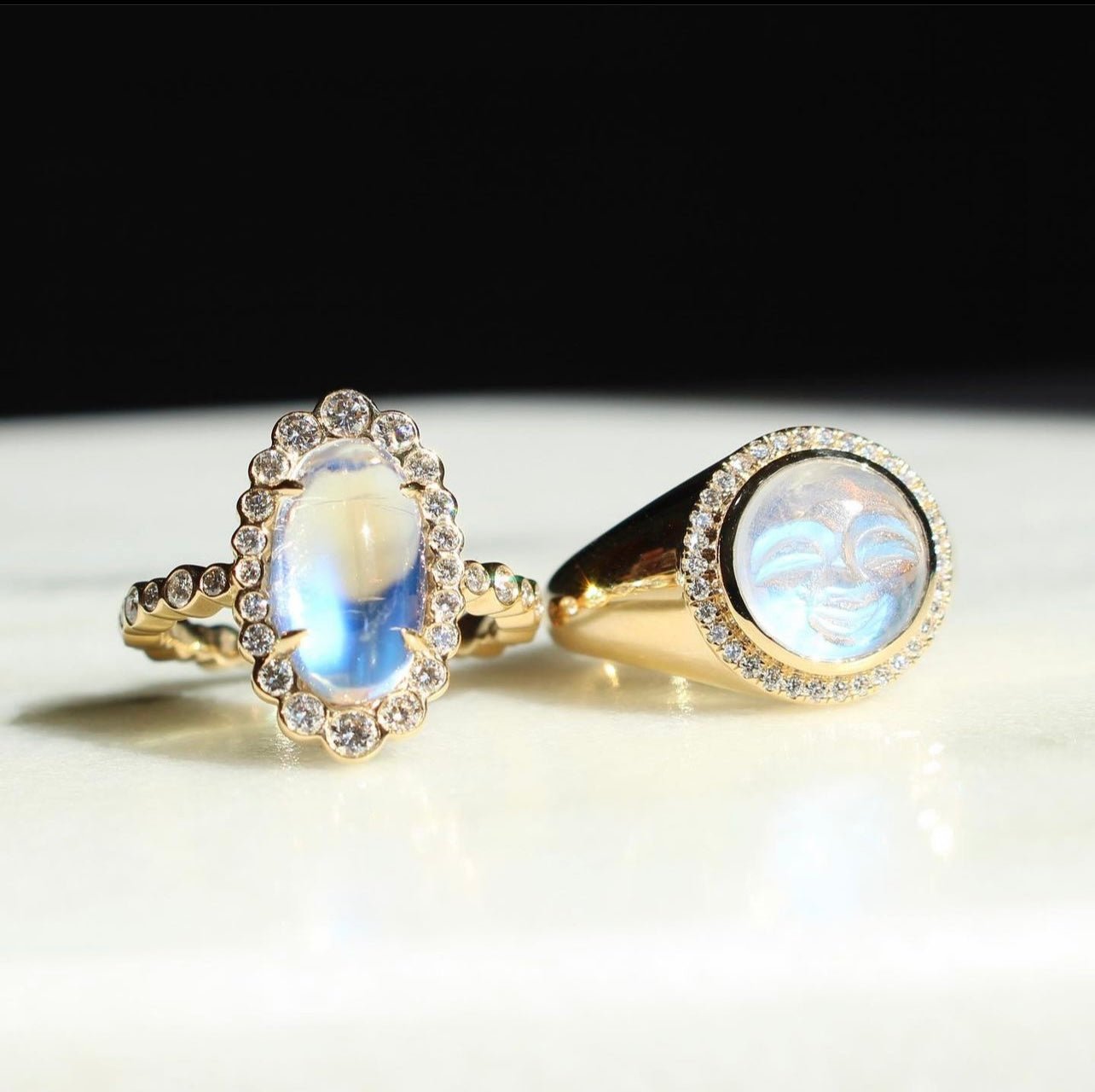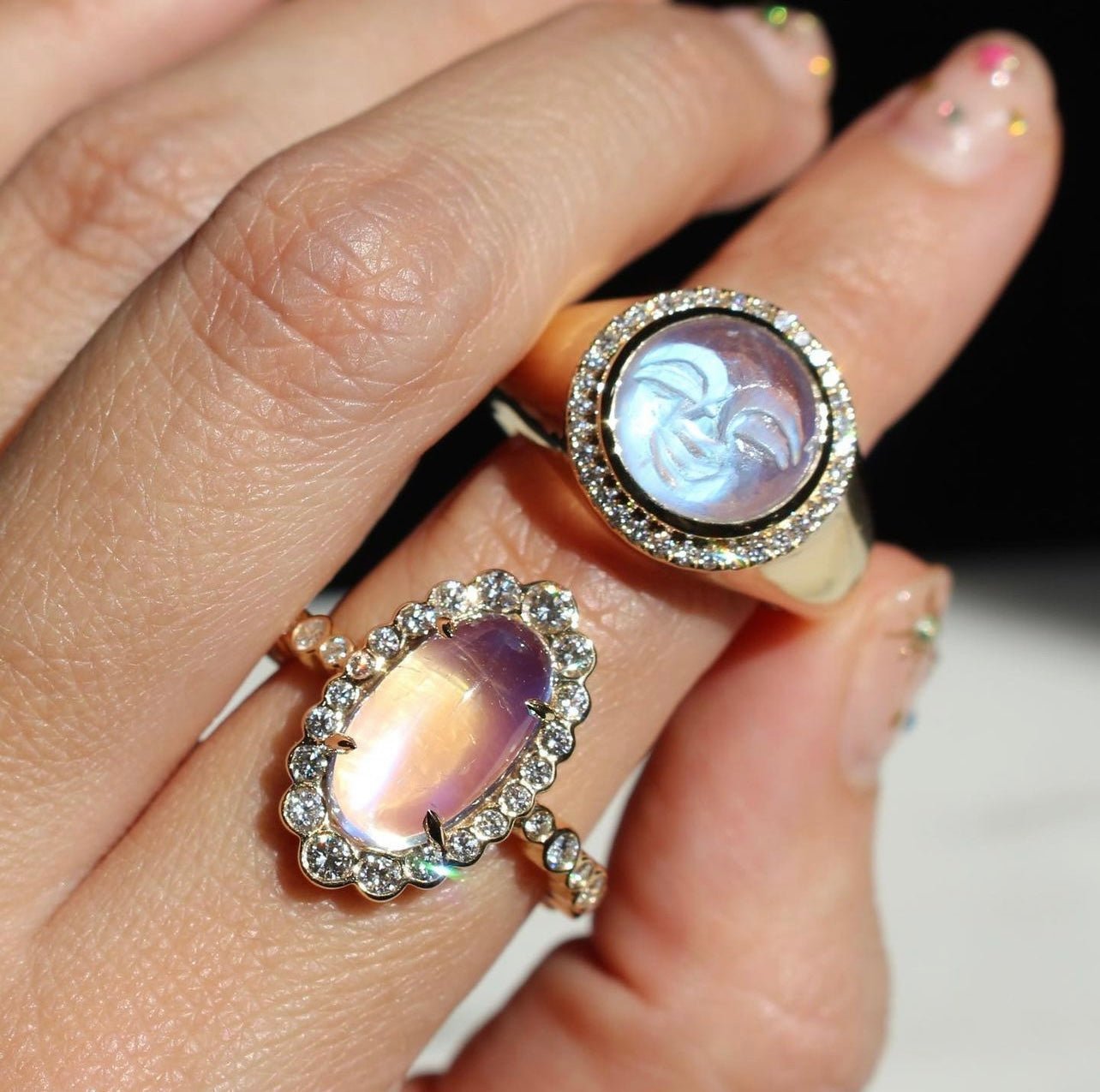Enhancements, cuts, and setting: these may sound like a mix of buzzwords to the average reader, but to a jeweler, they’re the difference between a rough gem and a fine piece. Most market-worthy designs include retouched stones, which sometimes lowers the value of the original. However, this can be avoided.
One example of a gem that needs little enhancement is paraíba tourmaline, a highly-regarded type of tourmaline. In its roughest state, a variety of brilliant colors can be found. The finest among those is an electric blue.
Naturally-occurring intense saturation has made the gem incredibly popular throughout the world and in our collections at Mark Henry Jewelry. The process from rough to fine pieces containing paraíba tourmaline is simplified by the original beauty of the gem itself.
Brazilian Roots, International Ties
Paraíba tourmaline was first discovered by the assistants of Heitor Dimas Barbosa in the hills of the Federal Brazilian State of Paraíba. Barbosa had been diligently searching through the region since 1981. His fruitless efforts were encouraged by a tourmaline strike in 1986. While the gem was not necessarily rare, its finding led him to uncover one of Brazil’s most precious natural occurrences in 1989.
Named for its place of origin, paraíba tourmaline was mined from a 400 meter-long, 200-meter wide piece of land. The entire area has been dug up in the present day in search of more lucrative findings, but the resources appear to have been run dry. This has increased the gem’s rarity and price point.
Common Characteristics
The tourmaline found by Barbosa in 1989 was unlike any variety of tourmaline documented before. Typically, the colors of the gems were composed of iron, manganese, chrome, and vanadium. However, paraíba tourmaline lacked chrome, vanadium, and iron. It was found that copper was the source of the elbaite mineral. Some paraíba tourmalines also include manganese and bismuth.
The peculiar gem was studied by gemologists diligently. Characteristics of rough paraíba tourmaline include:
- Refractive Index: 1.603-1.655.
- Fracture: Uneven and conchoidal.
- Hardness: 7-7.5 on the Mohs Scale.
- Wearability: Very good.
- Luminescence: Weak to slow, not present.
- Transparency: Translucent to transparent.
- Luster: Vitreous to resinous.
- Specific Gravity: 2.84-3.10.
For those with a high amount of copper in them, paraíba tourmalines have an absorption that typically starts at 600nm. Pleochroism is also present in these gems because they are a part of the elbaite mineral species.
This can be modified by designers to fix dark and light coloring. Paraíba tourmalines can have chatoyancy: four rays of light sheen that move as the gem moves, but this is uncommon.
Updated Locations
Over the years, the rarity of this gem remained despite exciting new discoveries worldwide—those of the most significant interest hail from Nigeria and Mozambique in Africa.
The Gübelin Gem Lab found in 2010 that paraíba tourmaline, potentially from Mozambique, mimicked the color and copper content of elbaite findings with the addition of manganese. Then, in 2017, the Gemological Institute of America (GIA) also reviewed these pieces.
It is fascinating that even the paraíba tourmaline that is created on opposite sides of the world has so many similarities.
A Shift in Composition
It is important to acknowledge that paraíba tourmalines can be found in a multitude of colors and not just its exemplary neon blue. Greenish blues, strict greens, mint greens, violets, purples, and pinks all coat these gems in varying levels of commonality. Their occurrences seem to correlate with their location.
In Mozambique, pinks and purples are the most common. Findings there and in Nigeria are colored in a blue hue due to copper, but they are more frequently found to be weakly saturated compared to Brazilian pieces. Due to this, paraíba tourmalines from Brazil are more valuable. It is difficult to visually differentiate the locations of these gems, which complicates the job of the consumer.
While all tourmalines hail from crystalline schists, African paraíba tourmalines deviate. These regional gems can be found in alluvial deposits from broken-down rock material as well.
An interesting point is that Nigeria and Brazil once fit together in Pangea, the map believed to include one large continent on Earth with pieces that matched up like a puzzle. If this is the case, it is entirely possible that the copper found in both locations was the same, and Nigerian tourmaline has a mirror composition of that from Paraíba - or at least, it used to!
Special Semantics
“Paraíba tourmaline” was certified as the formal term for these gems in 2006 by the International Gemstone Industry Laboratory Conference. This terminology disregarded a specific geographical location in its use. This meant that any gem found in Africa (or anywhere else) could use the same title as those in the original Brazilian batch.
It is now recognized by gem laboratories that copper elbaite is paraíba tourmaline. Suppose the American Gem Trade Association puts out a report on a certain type of paraíba tourmaline. In that case, it will specify the variety, species, and origin and include additional comments to clear up any questions regarding locality.
The Value of Rough Material
Of course, there are conditions to what paraíba tourmaline is desired and what is less revered. Those from Brazil have the strongest level of saturation and a medium tone. This saturation is measured somewhere between four and six, with tones ranging from light to medium-dark. It is common for these gems to have a slight green color underneath their blue hue, but it is essential that this added tone is weak. If it is noticeable, the value - and price - of the gem may fall.
What To Watch
In terms of importance, clarity is secondary only to color and its brilliance. It is not uncommon to find an elbaite mineral with classic paraíba hues. Be careful - these may not be true, rough paraíba tourmalines!
If its saturation is a four, testing for copper can help identify its correct category. Since paraíba tourmaline is known to have a general absorption of 600nm, a spectroscope can determine the validity of a high-content copper gem. Gem labs can test outstanding and questionable finds with a low amount of copper as well.
Modifications May Cost Sellers
Inclusions do occur in rough paraíba tourmaline and are widely accepted by consumers of tourmaline, jewelers, and gemologists. Copper inclusions alone can create a metallic look on the inside of the gem itself.
However, enhancements are not natural and do impact the value of the gem. Skilled jewelers can cut off the redness of those with high amounts of manganese, which contributes to a violet or pink pigmentation. This reduction is not natural and can give the effect of only copper-induced coloring.
For gems that are naturally pleochroic, an orientation of the gem’s table can be done. If the rough gem is a light pale, the orientation can make the table perpendicular to the length of its crystal. If the rough gem is dark, it can be lightened by orienting a finished gem’s table to be parallel to the length of the crystal.
This process directly interferes with the rough gem and can decrease its price. However, cutting the paraíba tourmaline parallel to its rough crystals can result in a decreased amount of waste.
Heat treatment is available to lighten dark tourmaline and turn violet or purple stones blue. Clarity treatment uses a laser to minimize dark inclusions on the surface of the gem. These both diminish the value of the piece and should generally be avoided.
Fine Designs: Our Pieces
At Mark Henry Jewelry, we specialize in preserving and showcasing this rare, exotic gem. We have been bringing precious stones to our customers for over three decades now, as long as paraíba tourmaline has been circulating in the gem community. We know that any piece of fine jewelry must start and end with the essence of a rough gem.
Cuts and Finishes
Most paraíba tourmalines are custom cut. We understand the beauty and value in a rough gem, and disrupting it against its natural state would only render it less special. Pear, oval, and cushion cuts are very popular with consumers, and we love these options.
The size of rough paraíba tourmaline is typically quite small, especially for those found in the original Brazilian discovery - mostly fragments. Since it is rare to work with a piece larger than one gram, maximizing the use of design helps to elevate the jewelry.
In our Electric Blue Collection, we utilize diamonds and deep-blue sapphires to create one-of-a-kind necklaces, bracelets, rings, and earrings. Set in 18k white or yellow gold, they shine as timeless and versatile additions to any wardrobe.
Unique Beauty
Our belief in an unconventional support for off-the-beat-and-path stones has led us to a long career shaping and sharing paraíba tourmaline. The deep-blue brilliance of the gem is only the surface of its offerings.
Incredible wearability, strength, and customization possibilities allow for truly exceptional use in our collections. Despite only being in circulation for three decades, paraíba tourmaline has been a trailblazer in the exotic gem community - we think three decades is enough time to figure out your place in the world of jewelry!
Sources:
Tourmaline Quality Factors | GIA
Paraíba Tourmaline Value, Price, and Jewelry Information | Gem Society|





Good morning from Minnesota, My wife and I have 9 or 10 pieces of Mark Henry Alexandrite pieces we have purchased over a number of years. The latest we had MH custom make for us last year. It was a .98ct Heart shaped Alexandrite with (2) .25ct Hearts on Fire Diamonds above it made into a Pendant. Fantastic job!! We love it!
Also, in the last 4-5 years we have purchased 3 or 4 pieces of Danyl Paraiba Tourmalines as well. We had a .89ct stone taken out of a ring we found in the Caribbean and had it custom made with 3 Hearts on Fire Diamonds into a Pendant. That stone was of exceptional quality of deep Blue color. Have not seen one of that color since. Just wanted to share. We are very loyal MH Alexandrite customers. Thank You,
Blessings, Kevin and Tammie P